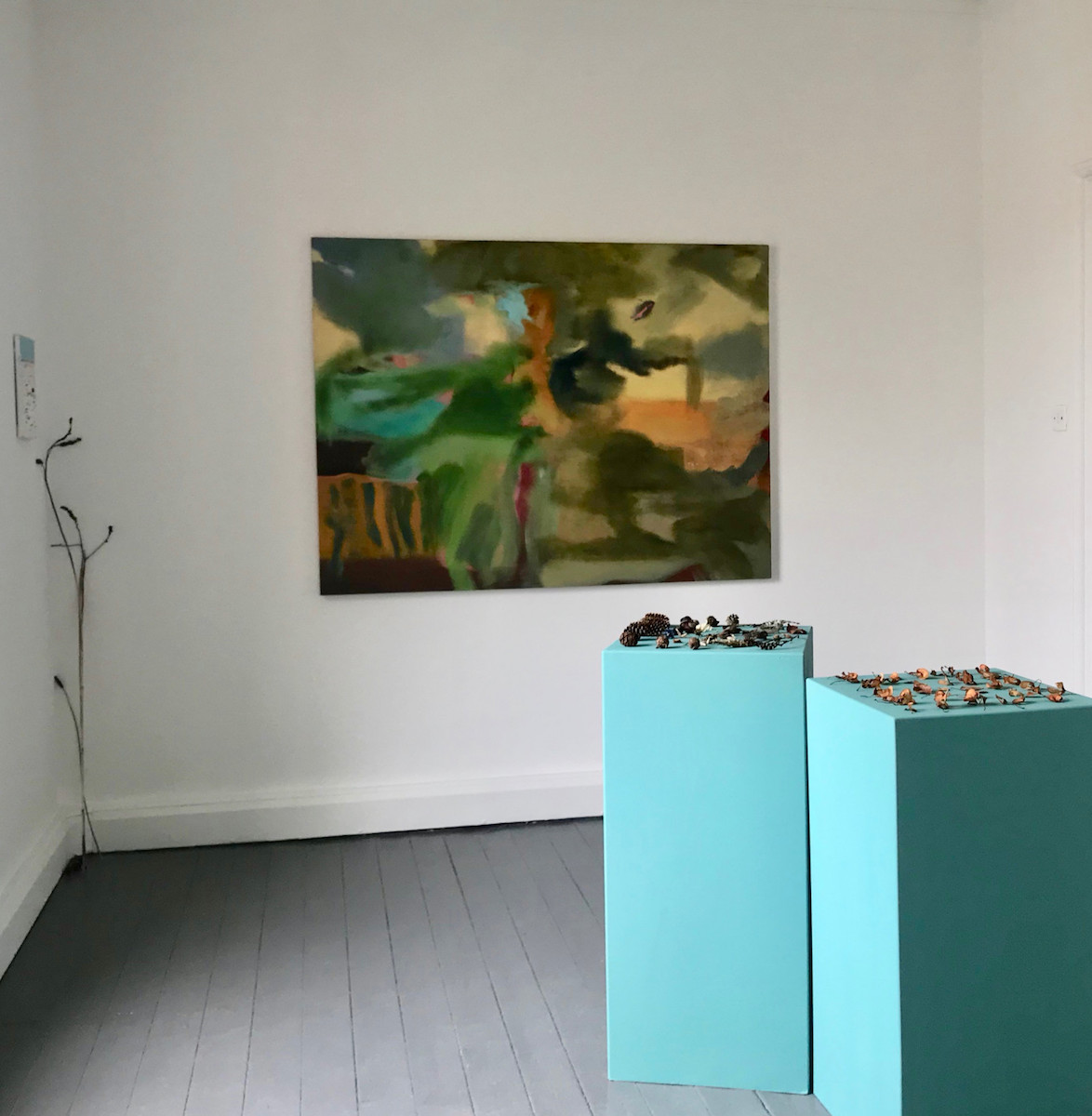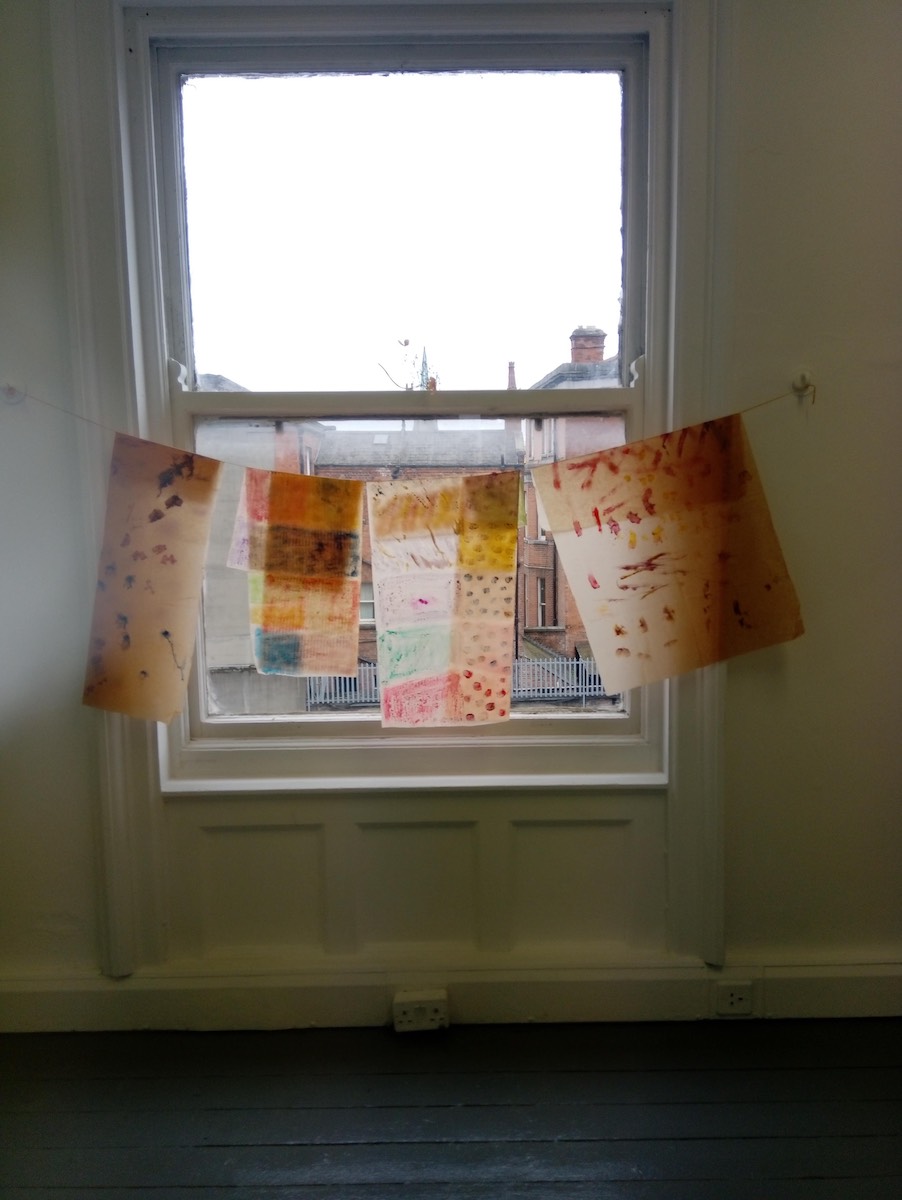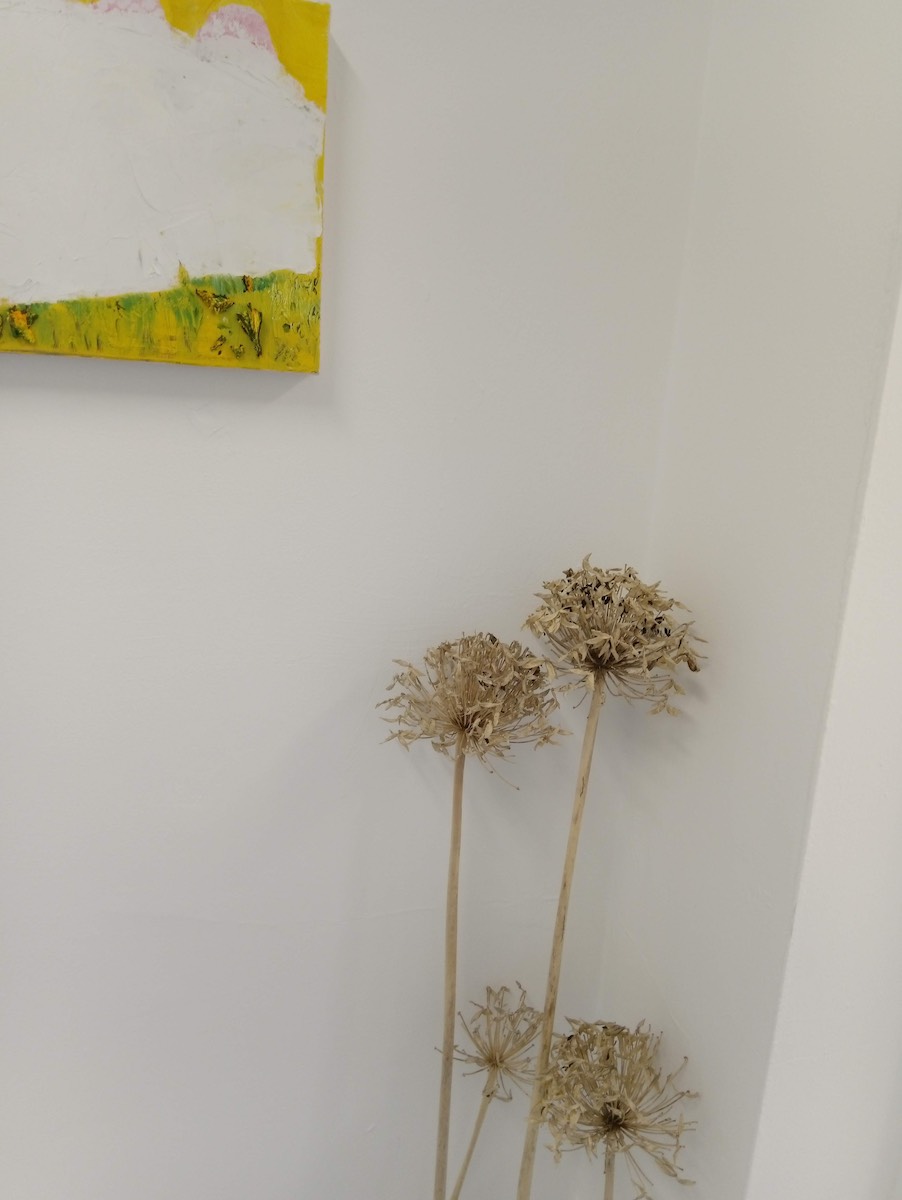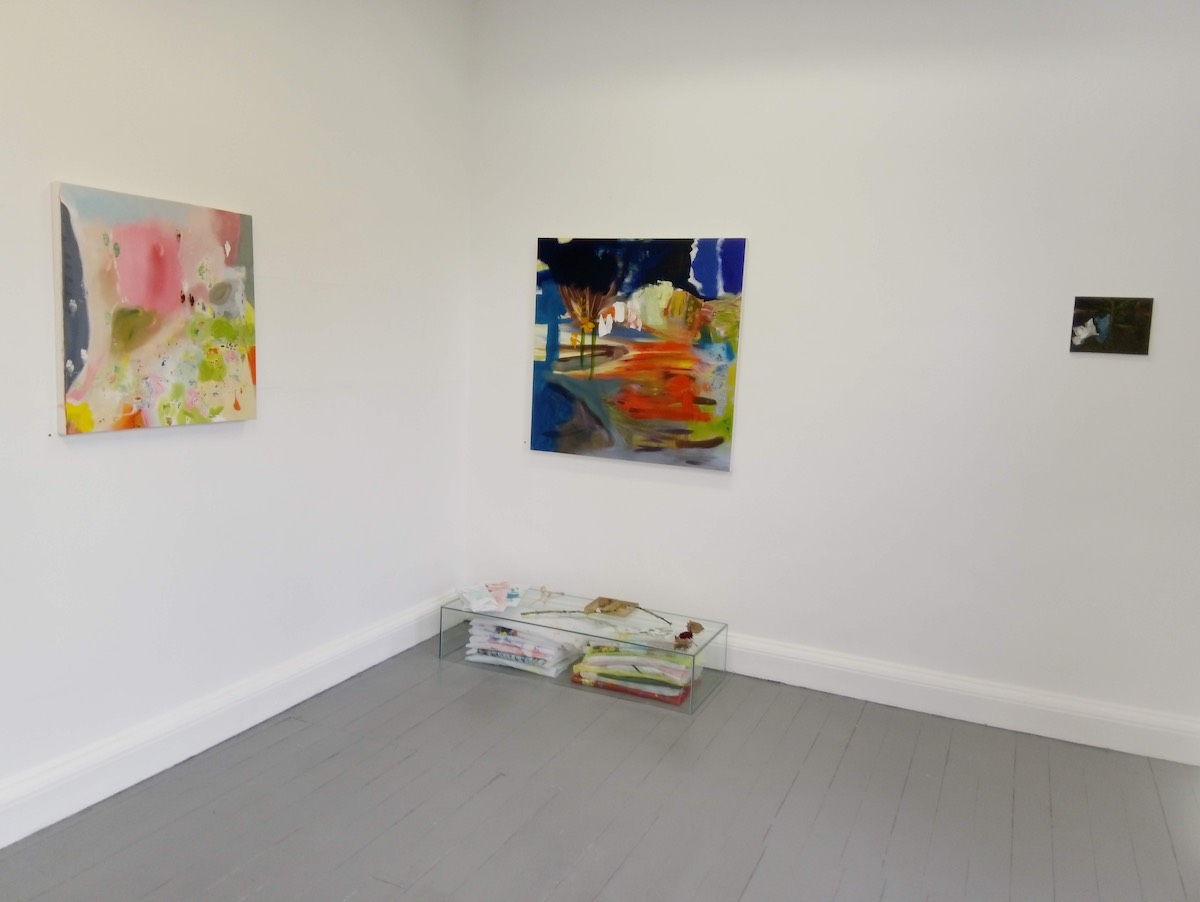Ramon Kassam: Barbara Lee
At the NCAD MFA exhibits this year, I was slowly and unwittingly pulled into a student’s painting show that felt out of place, out of touch. Other painting shows in this year’s group represented the cast of exhibition types that normally embody the contemporary MFA script. Variations of the typically well adjusted MFA package where all present. Including brilliant energetic and jocular paintings (albeit familiar), that would not look out of place in any gallery or museum anywhere. Or more reflexive work that intriguingly dismantled and reassembled pre-MFA processes. And a show that directly addressed wider trending social thematics through paintings. These sorts of archetypical MFA curves, trajectories or expectations were not so evident or obvious in Barbara Lee’s exhibition.
I was instantly dismissive of Lee’s presentation. Throughout the two adjoining studios-cum-exhibition spaces were 15 paintings. Abstract in spirit, the paintings revealed references to landscape, nature and gardens. Occasionally you could pick out more definitive subjects, like the trace of a figure or a clothes-line. Other objects joined the collection of paintings to re-enforce the thematics. Two teal plinths displayed pine cones and various other seeds. More vegetation leaned into some of the corners of the space. And in one room rubbings and markings from the garden objects (I’m assuming) were imprinted with paint onto sheets of fine tissue paper and hung on a string by the window to echo the clothes-line theme. The accompanying nostalgic text and booklet made reference to memory, planting, harvesting and gender. There was a Seamus Heaney quote and nods to Walter Benjamin in there too for good measure. The literal links, the cliché thematics, the mildness of it all, egged on my dismissal.
But such a dismissal was condescending and lazy. Quickly, when given the chance, the paintings began to show themselves and their qualities in their own right. They started to chip away at my own narrow conditioned prejudice, preconceptions and expectations about what constitutes worthy work on such a programme or in the wider field. Some paintings are better than others. The objects and install do the work no favours and as a whole it comes across as a bit awkward and amateur. Yet despite these distractions the good moments still find a way through, further evidence of a deeper quality within the practice. The largest and most centrally–placed painting Untitled for now is terrific! Stained and scrubbed marks, with vivid earthy colours and tones bleed into and around each other, and merge beautifully into the landscape composition. It perfectly balances all the impulses and fragmented ideas scattered throughout the show, and condenses them into a single canvas. More flashes of astute painting find their way onto other canvases too.
I enjoyed imagining what her tutorials might have been like. Tutors trying their best with little to no avail to coax her into covering up cliché tendencies and indoctrinate an inferred (quite often pseudo) sophisticated posturing. The over literalization in her show might have been a symptom caused by such conflicting tensions. But! Are the more established and polished archetypal models of MFA shows not clichés also? Which is fine, nearly everything in art is. I feel her work, and more like it, will pose interesting new challenges to the current concept of MFA programmes as entry requirements continue to be relaxed. And this might be a good thing in the long run. A wider range of ambitions, impulses and desires will all have to be catered for, extracted and translated into the production of art works. Perhaps making it all a little less predictable and a little more exciting?






